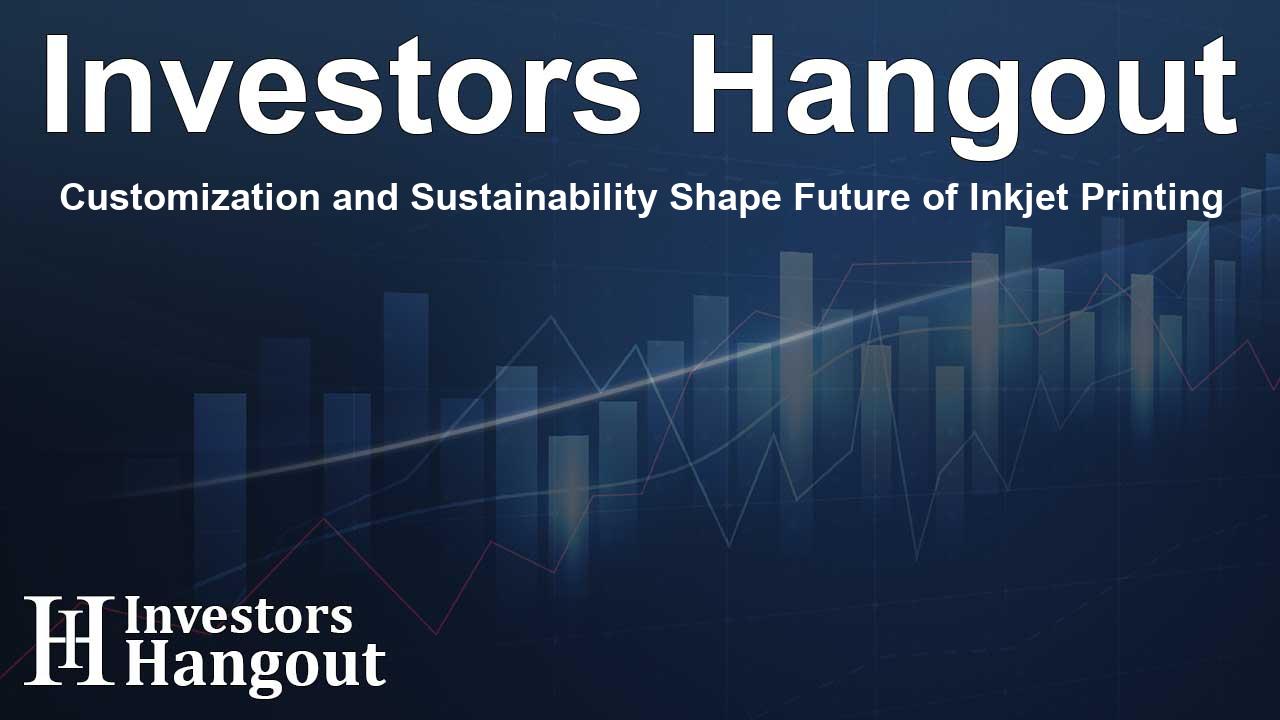Customization and Sustainability Shape Future of Inkjet Printing

Growth of Direct-to-Shape Inkjet Printers
The Direct-to-Shape Inkjet Printer Market is set to witness significant growth in the years to come. This market is projected to grow from USD 3.2 billion in 2024 to USD 4.0 billion by 2034, boasting a compound annual growth rate (CAGR) of 2.3%. This growth can largely be attributed to rising demand for customizable packaging solutions and continual advancements in digital printing technologies, which enable manufacturers to print directly onto various substrates.
Enhancing Flexibility in Packaging
Industries such as food & beverage, cosmetics, and consumer goods are increasingly embracing direct-to-shape inkjet printers. These printers are especially valued for their ability to produce personalized and high-quality packaging. The flexibility offered by these printers allows companies to adapt quickly to design changes and create on-demand prints, which reduces waste and improves production efficiency.
Technological Advancements Steering Growth
The advancements in thermal inkjet inks have revolutionized the printing domain, leading to faster print speeds, improved resolution, and the ability to print on intricate surfaces. Regions like North America and Europe are at the forefront of adopting these sustainable and efficient printing solutions, responding to the elevated demand for environmentally friendly practices in manufacturing.
Challenges & Cost Considerations
As with any evolving technology, the direct-to-shape inkjet printer market faces challenges. High initial costs for sophisticated systems and ongoing maintenance can deter some enterprises from making the switch. Nevertheless, the benefits of cost-effectiveness and ecological sustainability offered by direct-to-shape printing solutions will probably outweigh these concerns, leading to increased adoption across various sectors.
Drivers of Market Growth
Several factors are contributing to the growth of the Direct-to-Shape Inkjet Printer Market. The increasing emphasis on eco-friendly packaging, a shift toward personalized consumer goods, and the rise of Industry 4.0 practices are significant trends shaping the market landscape. New opportunities are also arising in developing regions where industrial printing methods are undergoing modernization.
Sustainability in Packaging
One of the most compelling trends is the transition toward sustainability. Direct-to-shape inkjet printing minimizes the use of additional labels and adhesives, resulting in less material waste. Innovations in ink technology, including water-based and UV-curable inks, are leading the charge toward environmentally responsible printing solutions.
Emerging Technologies Enhance Productivity
Automation and intelligent software development for direct-to-shape printing open up avenues for players in this market to enhance productivity. This allows businesses to deliver customized solutions more efficiently, keeping pace with the growing consumer expectations for personalization.
Key Insights from Market Projections
- The Direct-to-Shape Inkjet Printer Market is on track to reach USD 4.0 billion by 2034.
- Demand for sustainable, customizable packaging is a pivotal market driver.
- North America and Europe are leading in terms of innovative applications and market growth.
- The initial cost of advanced printing systems presents challenges, but the overall savings enhance long-term value.
Market Influences and Regional Trends
The demand for eco-friendly printing solutions that reduce material usage will continue to foster growth within the market. Brands increasingly require flexible and customizable packaging options to differentiate themselves in competitive landscapes. This trend is further amplified by continuous advancements in print technology, which enhance print speed and the durability of print heads.
Companies Leading the Charge
Key players driving innovation within the Direct-to-Shape Inkjet Printer Market include Xerox Corporation, Heidelberg USA, Mimaki Europe, Xaar plc, and Koenig & Bauer AG. These companies prioritize technological advancements and strategic collaborations to bolster their market presence and expand their product offerings.
Frequently Asked Questions
What is the projected growth rate of the Direct-to-Shape Inkjet Printer Market?
The market is expected to grow at a CAGR of 2.3%, reaching USD 4.0 billion by 2034.
Which industries are driving the demand for these printers?
Industries such as food & beverage, cosmetics, and consumer goods are leading the demand for direct-to-shape inkjet printing solutions.
What are the main challenges for the Direct-to-Shape Inkjet Printer market?
High initial costs and maintenance requirements can pose challenges for companies considering the switch to advanced inkjet systems.
How does sustainability impact the market's growth?
By minimizing the need for additional packaging materials, eco-friendly practices are a major factor driving the growth of direct-to-shape inkjet printing.
Who are the major players in this market?
Leading companies include Xerox Corporation, Heidelberg USA, and Mimaki Europe, focusing on innovation and strategic partnerships.
About Investors Hangout
Investors Hangout is a leading online stock forum for financial discussion and learning, offering a wide range of free tools and resources. It draws in traders of all levels, who exchange market knowledge, investigate trading tactics, and keep an eye on industry developments in real time. Featuring financial articles, stock message boards, quotes, charts, company profiles, and live news updates. Through cooperative learning and a wealth of informational resources, it helps users from novices creating their first portfolios to experts honing their techniques. Join Investors Hangout today: https://investorshangout.com/
Disclaimer: The content of this article is solely for general informational purposes only; it does not represent legal, financial, or investment advice. Investors Hangout does not offer financial advice; the author is not a licensed financial advisor. Consult a qualified advisor before making any financial or investment decisions based on this article. The author's interpretation of publicly available data shapes the opinions presented here; as a result, they should not be taken as advice to purchase, sell, or hold any securities mentioned or any other investments. The author does not guarantee the accuracy, completeness, or timeliness of any material, providing it "as is." Information and market conditions may change; past performance is not indicative of future outcomes. If any of the material offered here is inaccurate, please contact us for corrections.